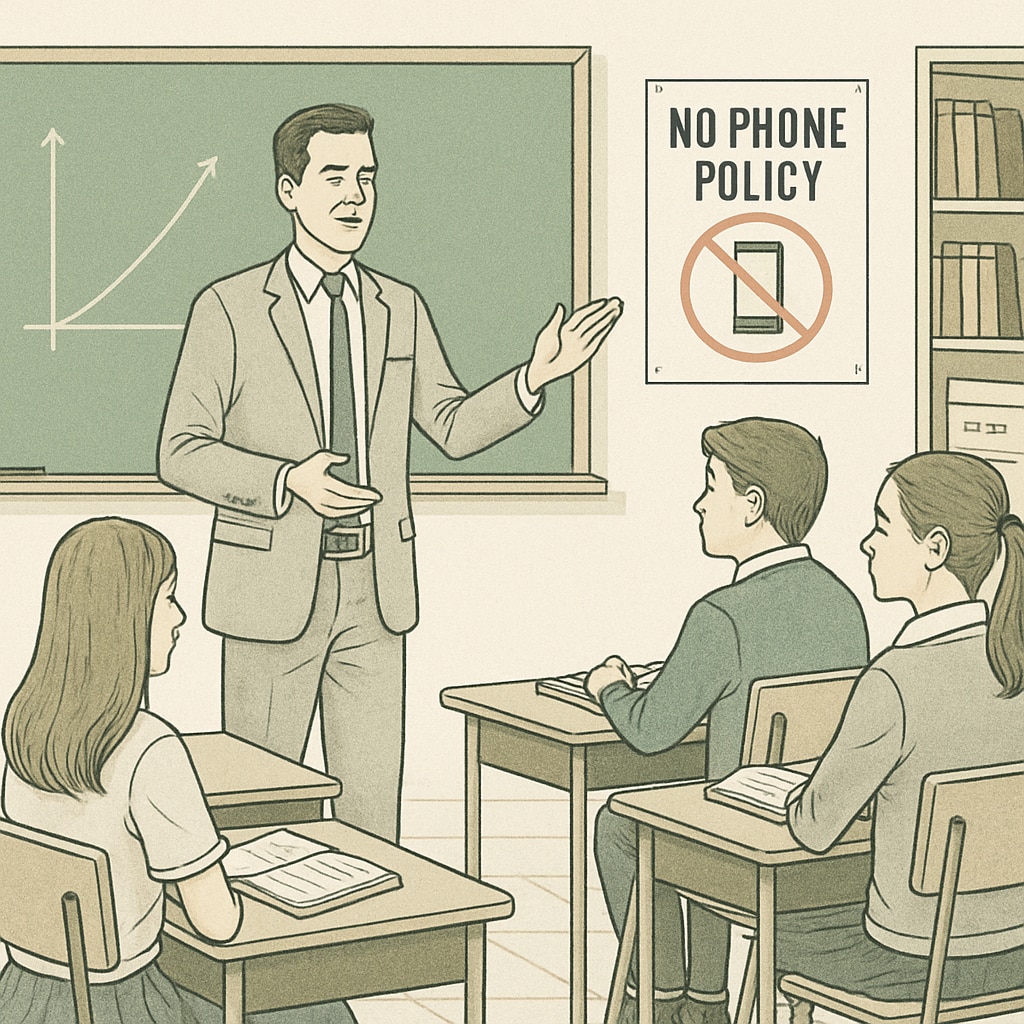The newly introduced campus cell phone ban in both public and private schools has become a hot topic, sparking debates within education circles and the wider community. Advocates argue that banning phones helps students focus on learning, while critics worry about the policy’s potential effects on mental health and social development. As technology continues to shape modern education, schools face the challenge of balancing its benefits with the need for discipline and focus.
Why Are Schools Introducing Cell Phone Bans?
In recent years, the increasing prevalence of smartphones has raised concerns about their impact on students’ academic performance and behavior. Research suggests that excessive phone use can distract students, reduce face-to-face interactions, and contribute to anxiety. Public and private schools have responded by implementing cell phone bans, aiming to create a more focused learning environment.
For example, a study by the London School of Economics found that schools with phone restrictions saw an improvement in test scores, especially among lower-achieving students. Education policy experts argue that these measures can level the playing field by reducing distractions and encouraging equal opportunities for learning.

How Public and Private Schools Approach the Ban Differently
Public and private schools often adopt varying strategies when implementing cell phone bans. Public schools, which serve diverse student populations, typically enforce blanket policies to ensure consistency. These policies may involve collecting phones at the start of the day or restricting their use during class hours. However, critics argue that such measures may disproportionately affect students who rely on their phones for family communication or emergencies.
In contrast, private schools often have more flexibility in tailoring their policies. Some private institutions allow limited phone use during breaks or for educational purposes, emphasizing a balanced approach. Parents in private school communities may also have greater input in shaping these rules, reflecting their values and expectations.
Both approaches highlight the need to strike a balance between discipline and autonomy, a task that remains challenging in the digital age.

The Impact of Cell Phone Bans on Students
The effects of cell phone bans can be categorized into three key areas: academic performance, mental health, and social skills.
- Academic Performance: Studies consistently show that reduced phone use during school hours improves concentration and overall academic outcomes. Students spend less time distracted by social media or games and more time engaging with coursework.
- Mental Health: While reduced screen time can lower anxiety linked to social media, some students may feel isolated without their primary mode of communication. Schools must address these concerns by providing alternative support systems.
- Social Skills: Banning phones encourages face-to-face interactions, which are vital for developing communication and teamwork skills. However, educators must ensure that students still learn how to use technology responsibly outside of school.
As a result, schools must carefully evaluate the long-term implications of these policies while considering students’ diverse needs.
Is There a Middle Ground?
While the debate continues, many experts suggest a more nuanced approach. Instead of outright bans, schools could adopt “restricted use” policies, allowing phones for specific purposes, such as research or emergency communication. Teachers can also integrate technology into lessons to demonstrate its positive potential.
Additionally, educating students about digital literacy and responsible phone use is crucial. By equipping young people with the skills to manage their screen time effectively, schools can prepare them for a technology-driven world without compromising their well-being.
For parents, open communication with schools is key. Whether their children attend public or private schools, parents can advocate for policies that balance discipline with flexibility, ensuring the best outcomes for all students.
Ultimately, the question is not whether cell phones belong in schools but how they can be managed to support learning and personal growth.
Conclusion
The campus cell phone ban represents a critical crossroads for public and private schools. As educators, parents, and policymakers navigate this complex issue, the focus must remain on students’ overall development. By fostering open dialogue and prioritizing balance, schools can create an environment that nurtures both academic success and social-emotional well-being in the digital age.
Readability guidance: This article maintains concise paragraphs, uses lists to summarize key points, and incorporates transition words for smooth flow. The content is designed to provide an in-depth yet accessible analysis of the topic.


